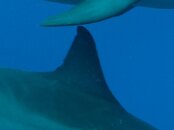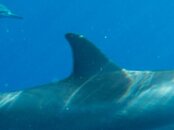gstrek
Contributor
I would totally agree that C-AF is much less useful than S-AF in the PEN line and with the EM-5. The EM-1 has very effective C-AF. I have used IS-1 with the entire line of Olympus mirrorless cameras and I have also used several Panasonic and Sony mirrorless cameras without stabilization. I have used lenses from the 8mm fisheye to the 60mm macro including some with lens stabilization both on and off. Without question the on sensor stabilization has worked best for me underwater. While you will see a big difference between the E-PL1 and the OM-D EM-1 stabilization to me it is still worth using.
Thanks, Phil. I have only shot with IS1 on but want to at least try turning it off. The softness I am seeing in many shots, I am pretty sure, is due to having RLS priority set to trigger even if not in focus. It is a never ending trial of keeping the center focus on the fish eye and then recompose and shoot. Many of my best fish butts are in focus!





